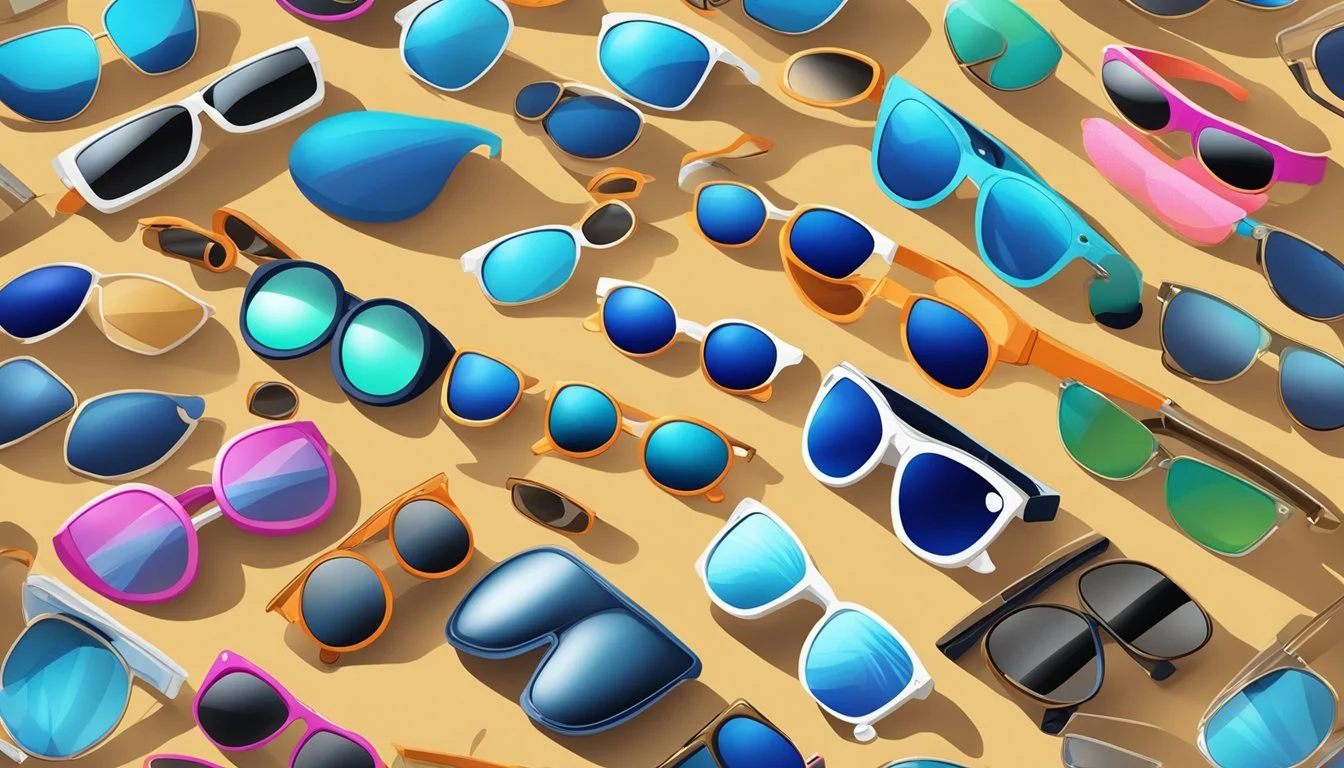7 Techniques to Manage Sensory Overload in Public Spaces
Coping Strategies for Overwhelming Environments
Sensory overload can be a significant challenge for many individuals, especially in bustling public spaces. The constant barrage of sights, sounds, smells, and other stimuli can quickly become overwhelming, leading to discomfort, anxiety, and even physical symptoms. Understanding and implementing effective techniques to manage sensory overload is crucial for maintaining well-being and enjoying public outings.
For those who struggle with sensory sensitivities, navigating crowded streets, shopping centers, or busy restaurants can be daunting. However, with the right strategies, it's possible to mitigate the impact of sensory overload and create a more comfortable experience in public spaces. This article explores seven practical techniques that can help individuals better cope with sensory challenges and regain control in stimulating environments.
1) Noise-canceling headphones
Noise-canceling headphones are an effective tool for managing sensory overload in public spaces. These devices use advanced technology to reduce ambient noise, creating a more peaceful environment for the wearer.
For individuals with autism spectrum disorder (ASD), noise-canceling headphones can be particularly beneficial. Many people with ASD experience heightened sensitivity to sounds, which can lead to discomfort and anxiety in noisy settings.
High-quality noise-canceling headphones, such as the Bose QuietComfort series, are popular choices for autistic adults. These headphones excel at blocking out low-frequency sounds common in urban environments and during travel.
Some noise-canceling headphones also offer the option to play calming music or white noise. This feature can further help individuals with ASD to focus and remain calm in overstimulating situations.
When selecting noise-canceling headphones, it's important to consider factors like comfort, battery life, and sound quality. Wireless options provide added convenience for users on the go.
For those who prefer a more discreet option, noise-canceling earbuds are available. Models like the Soundcore Space A40 offer excellent audio quality in a compact form factor.
2) Personalized playlists
Personalized playlists can be a powerful tool for managing sensory overload in public spaces. These curated collections of music or sounds can help create a buffer between the individual and overwhelming environmental stimuli.
Many people find that familiar songs or calming instrumental tracks can provide a sense of comfort and control. By selecting music that resonates with their preferences, individuals can create a more predictable auditory environment.
Noise-canceling headphones paired with personalized playlists can be particularly effective. This combination allows users to block out unwanted external sounds while immersing themselves in their chosen audio.
Some individuals may benefit from nature sounds or white noise tracks in their playlists. These can help mask disruptive background noises and create a more soothing atmosphere.
It's important to experiment with different types of music and sounds to discover what works best. Some may prefer upbeat tunes to energize and focus, while others might opt for slower, more relaxing melodies to calm their senses.
Having multiple playlists for different situations can be helpful. A playlist for busy shopping centers might differ from one used during commutes or in quieter public spaces.
3) Sunglasses with UV protection
Sunglasses with UV protection offer an effective way to manage sensory overload in public spaces. These specialized lenses block harmful ultraviolet rays while reducing glare and brightness.
Quality sunglasses should provide 100% UV protection or UV400 protection. This level of protection shields the eyes from both UVA and UVB radiation, which can cause long-term damage.
When selecting sunglasses, look for labels that specifically state "100% UV protection" or "UV400." These indicators ensure the lenses offer adequate defense against ultraviolet light.
Polarized lenses can further enhance comfort by reducing glare from reflective surfaces like water, snow, or glass. This feature can be particularly helpful for individuals sensitive to bright light.
Large frames or wraparound styles provide additional protection by blocking light from entering at the sides. This design can be especially beneficial in extremely bright environments.
For those who require prescription lenses, UV-protective coatings can be applied to regular glasses. This option allows for constant protection without the need to switch between regular glasses and sunglasses.
4) Portable meditation apps
Portable meditation apps have become valuable tools for managing sensory overload in public spaces. These apps offer guided meditations and relaxation exercises that can be accessed anytime, anywhere through smartphones or tablets.
Many apps provide short, focused sessions designed to help users quickly center themselves and reduce stress. Some popular options include Headspace, Calm, and Insight Timer, which offer a variety of meditation styles and durations.
Users can choose from breathing exercises, body scans, or visualizations to suit their preferences and current needs. Some apps even feature specific meditations for dealing with anxiety or overwhelming environments.
The portability of these apps allows individuals to find a quiet corner or step outside for a few minutes of guided relaxation. This can be particularly helpful in busy public spaces where sensory stimuli may become overwhelming.
By incorporating portable meditation apps into their coping strategies, individuals can develop a personal toolkit for managing sensory overload on the go. Regular use of these apps can also help build resilience and improve overall stress management skills.
5) Wearable stress monitors
Wearable stress monitors provide real-time feedback on physiological responses to stress in public spaces. These devices track various metrics like heart rate variability, skin conductance, and breathing patterns to detect signs of sensory overload.
Many wearables use vibration or visual cues to alert users when stress levels rise. This early warning system allows individuals to implement coping strategies before sensory overload becomes overwhelming.
Some advanced devices incorporate EEG sensors to measure brainwave activity. This technology can identify specific brain states associated with stress and relaxation, offering deeper insights into an individual's sensory processing.
Wearable stress monitors often pair with smartphone apps for data tracking and analysis. Users can identify patterns in their stress responses and adjust their strategies for managing sensory challenges in public environments.
These devices can be particularly helpful for those who have difficulty recognizing their own stress signals. The objective data provided by wearables supports self-awareness and promotes proactive stress management in potentially overwhelming situations.
6) Essential oil inhalers
Essential oil inhalers offer a portable and discreet way to manage sensory overload in public spaces. These small devices contain concentrated essential oils that can be inhaled as needed for calming effects.
Lavender is a popular choice for its soothing properties. It may help reduce anxiety and promote relaxation when sensory input becomes overwhelming. Other oils like peppermint or eucalyptus can provide a refreshing and grounding scent.
To use an inhaler, one simply removes the cap and holds it a few inches from the nose. Deep, slow breaths allow the aroma to enter the nasal passages and lungs. This can be repeated as needed throughout the day.
Inhalers are compact enough to fit in a pocket or purse, making them convenient for travel or quick use in public restrooms, crowded stores, or other potentially overwhelming environments. They provide a personal aromatherapy experience without affecting others nearby.
Some people find that using an inhaler in combination with deep breathing exercises enhances its effectiveness. The act of focusing on one's breath while inhaling a calming scent can help redirect attention away from overwhelming stimuli.
7) Discreet fidget tools
Discreet fidget tools can be invaluable for managing sensory overload in public spaces. These small, unobtrusive objects provide tactile stimulation to help individuals stay focused and calm.
Popular options include stress balls, fidget cubes, and small handheld puzzles. These items can be easily concealed in a pocket or bag, allowing for discreet use when needed.
Some fidget tools are designed to resemble everyday objects, such as pens or jewelry. This enables users to engage with them without drawing unwanted attention.
Textured keychains or bracelets offer another subtle way to address sensory needs. Users can run their fingers over the varying surfaces to provide grounding sensory input.
For those who prefer auditory stimulation, small clicking devices or silent fidget spinners can be effective. These tools offer sensory feedback without disturbing others nearby.
Pocket-sized putty or clay provides a malleable option for tactile stimulation. Users can knead or shape the material discreetly under a table or in their lap.
When selecting a fidget tool, it's important to consider personal preferences and specific sensory needs. What works well for one person may not be suitable for another.
Understanding Sensory Overload
Sensory overload occurs when the brain becomes overwhelmed by excessive sensory input from the environment. This phenomenon can significantly impact daily life, especially in bustling public spaces.
Definition and Causes
Sensory overload happens when a person experiences more sensory input than their brain can effectively process. This can lead to feelings of discomfort, anxiety, or even physical symptoms. The condition is common among individuals with sensory processing disorders, autism, or certain neurological conditions.
Causes of sensory overload vary but often stem from an overabundance of stimuli. This may include bright lights, loud noises, strong smells, or crowded spaces. Stress, fatigue, and inadequate sleep can also lower a person's threshold for sensory input, making them more susceptible to overload.
Some people are naturally more sensitive to sensory stimuli due to differences in their nervous system. This heightened sensitivity can make everyday environments challenging to navigate.
Common Triggers in Public Spaces
Public spaces present numerous potential triggers for sensory overload. Busy shopping malls, for example, often combine multiple sensory challenges:
Bright fluorescent lighting
Loud background music or announcements
Strong scents from perfume counters or food courts
Crowded walkways with constant movement
Other common triggers in public areas include:
• Traffic noise and exhaust fumes on busy streets • Flickering screens or flashing advertisements • Unexpected touch from passersby in crowded spaces • Temperature extremes in poorly regulated buildings
Recognizing these triggers is crucial for developing effective management strategies. By identifying specific sensory challenges, individuals can better prepare for and navigate public environments.
Mitigation Techniques
Effective strategies for managing sensory overload in public spaces involve both modifying the environment and employing personal coping methods. These techniques can significantly reduce discomfort and enhance overall well-being when navigating stimulating surroundings.
Environmental Modifications
Noise-canceling headphones or earplugs can drastically reduce auditory input in busy areas. These devices filter out background noise, allowing individuals to focus on essential sounds or enjoy a quieter atmosphere.
Sunglasses or tinted lenses help decrease visual stimulation by reducing glare and brightness. This can be especially beneficial in brightly lit spaces or outdoor environments.
Seeking out quiet zones or designated sensory-friendly areas in public places provides respite from overwhelming stimuli. Many establishments now offer these spaces for individuals who need a break.
Timing visits to public spaces during off-peak hours can minimize exposure to crowds and excessive noise. Early mornings or weekdays often offer calmer environments in typically busy locations.
Personal Strategies
Deep breathing exercises can help regulate the body's stress response when faced with sensory challenges. Practicing these techniques regularly improves their effectiveness during overwhelming situations.
Carrying comfort items, such as stress balls or fidget toys, provides a tactile focus that can be grounding in overstimulating environments. These objects offer a personal, controllable sensory experience.
Developing a personal exit strategy before entering public spaces ensures a quick retreat if needed. This may include identifying quiet areas nearby or having transportation readily available.
Using smartphone apps designed for sensory management can offer real-time coping strategies and track triggers. These tools provide personalized support tailored to individual needs and preferences.
Long-term Management Strategies
Developing effective long-term strategies is crucial for individuals dealing with sensory overload in public spaces. These approaches focus on building resilience and creating sustainable coping mechanisms.
Routine Establishment
Creating a consistent daily routine can significantly reduce sensory stress. Start by setting regular sleep and wake times to regulate the body's internal clock. Incorporate calming activities like meditation or gentle stretching into the morning routine.
Plan meals and snacks at consistent times to maintain stable blood sugar levels. This helps prevent irritability and heightened sensitivity. Schedule regular breaks throughout the day for sensory reset activities.
Gradually expose yourself to challenging environments in short, controlled bursts. This helps build tolerance over time. Keep a sensory journal to track triggers and successful coping strategies.
Professional Support
Seeking professional help is often beneficial for long-term sensory management. Occupational therapists can provide tailored strategies for sensory integration and regulation. They may recommend specific exercises or equipment to address individual needs.
Cognitive-behavioral therapy can help develop coping skills and reframe negative thought patterns associated with sensory overload. A therapist can teach relaxation techniques and stress management strategies.
Consider consulting with a nutritionist to identify any dietary factors that may contribute to sensory sensitivity. Some individuals find relief by adjusting their intake of certain foods or additives.
Regular check-ins with a healthcare provider can help monitor progress and adjust strategies as needed. They may also recommend supportive medications if appropriate.






